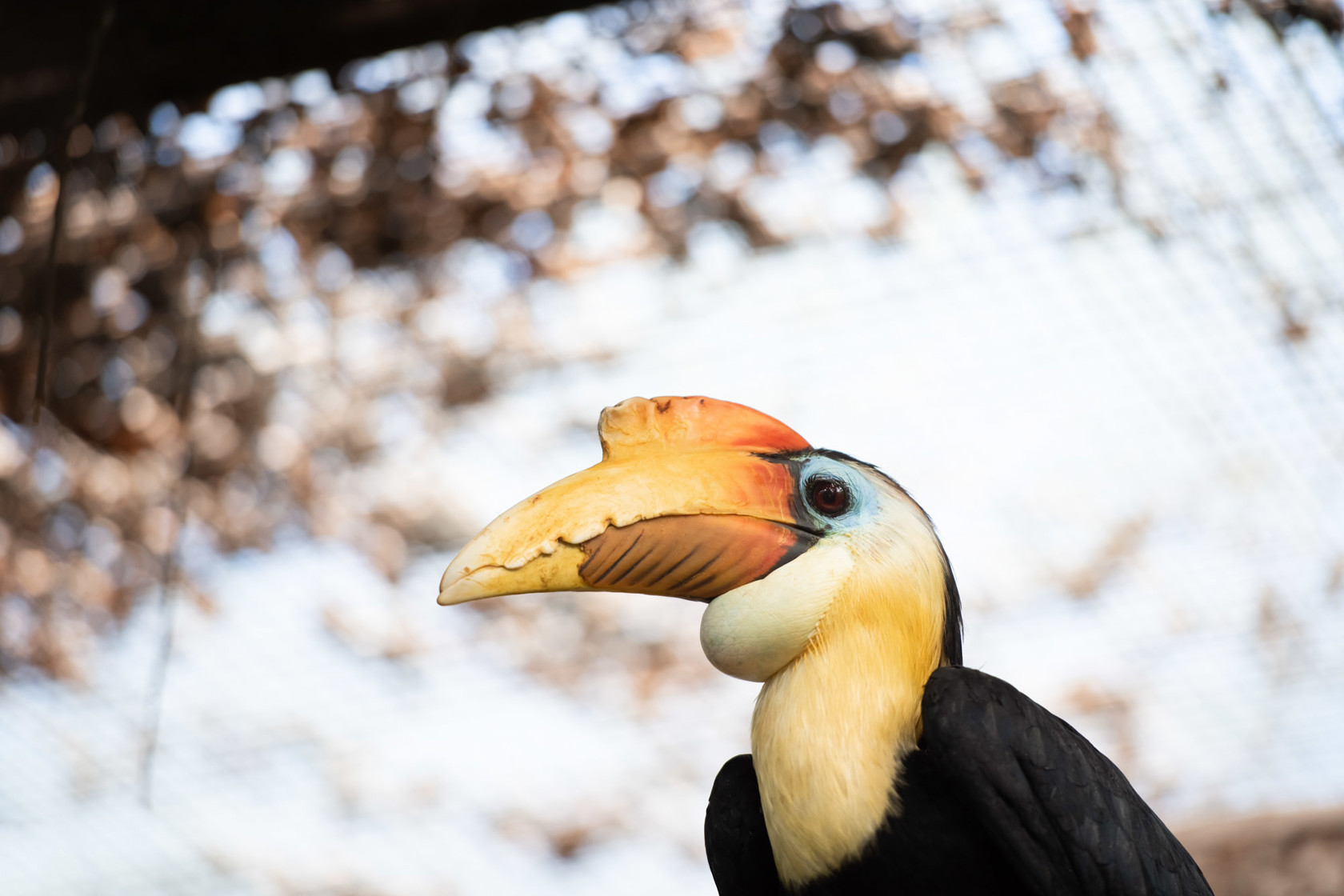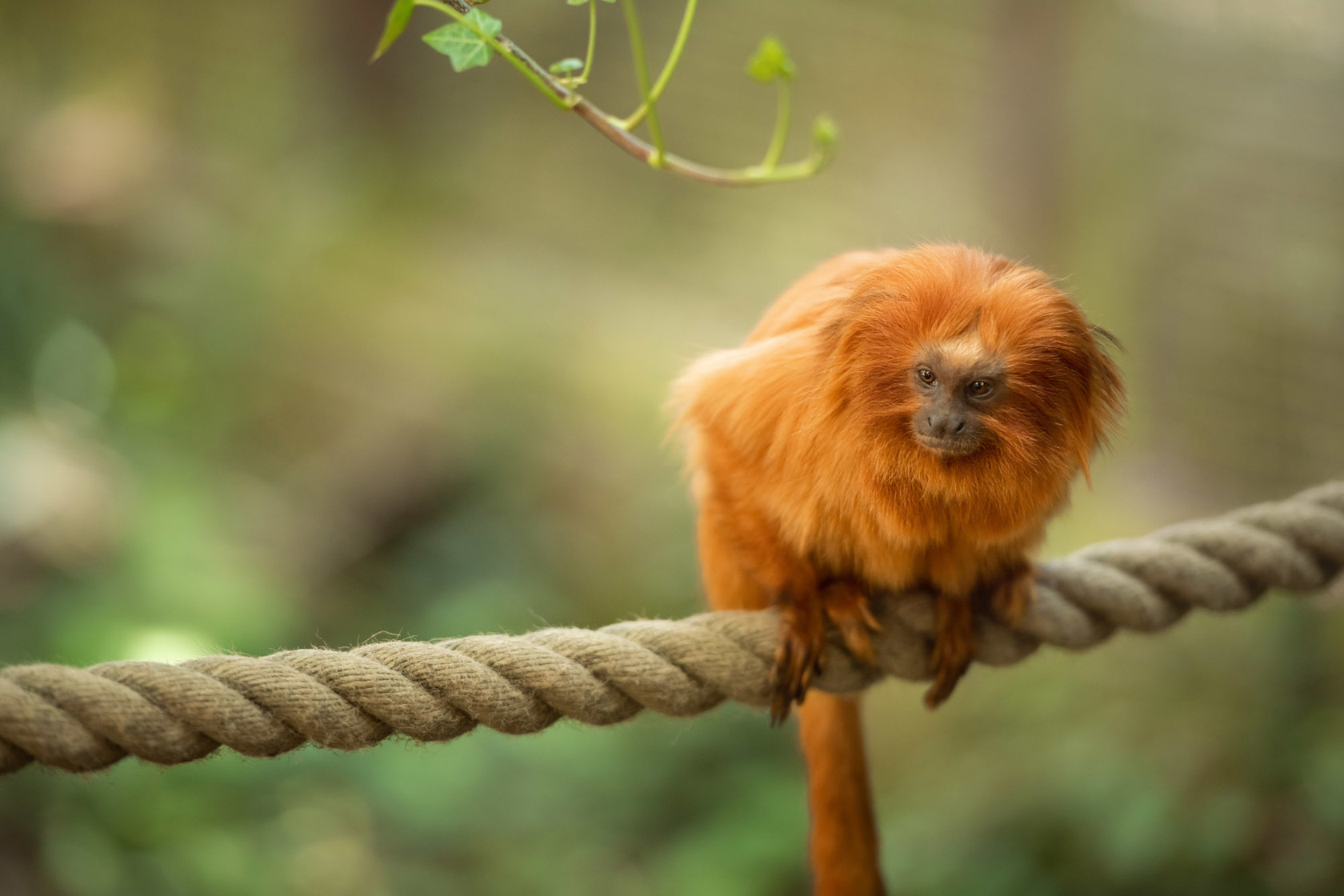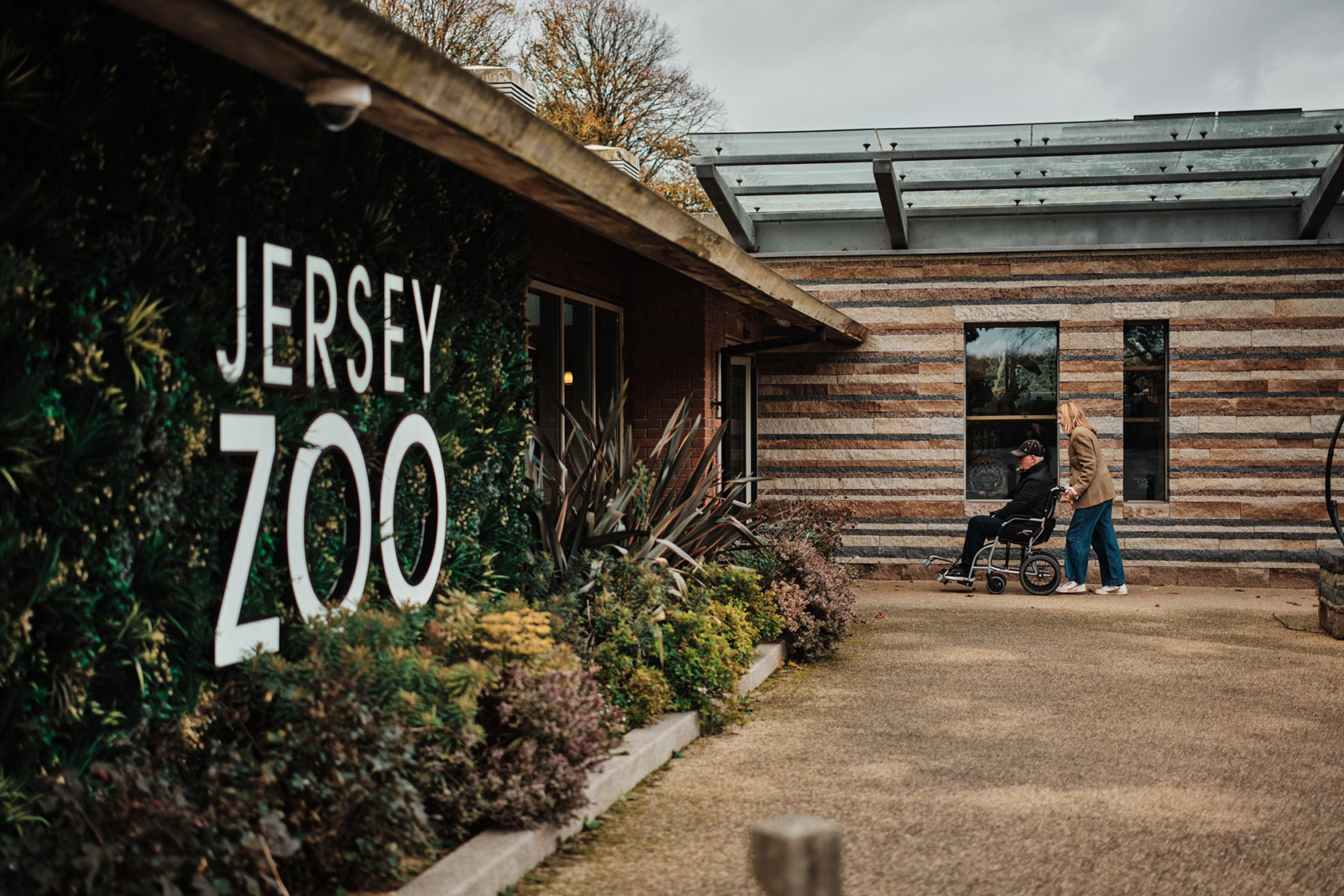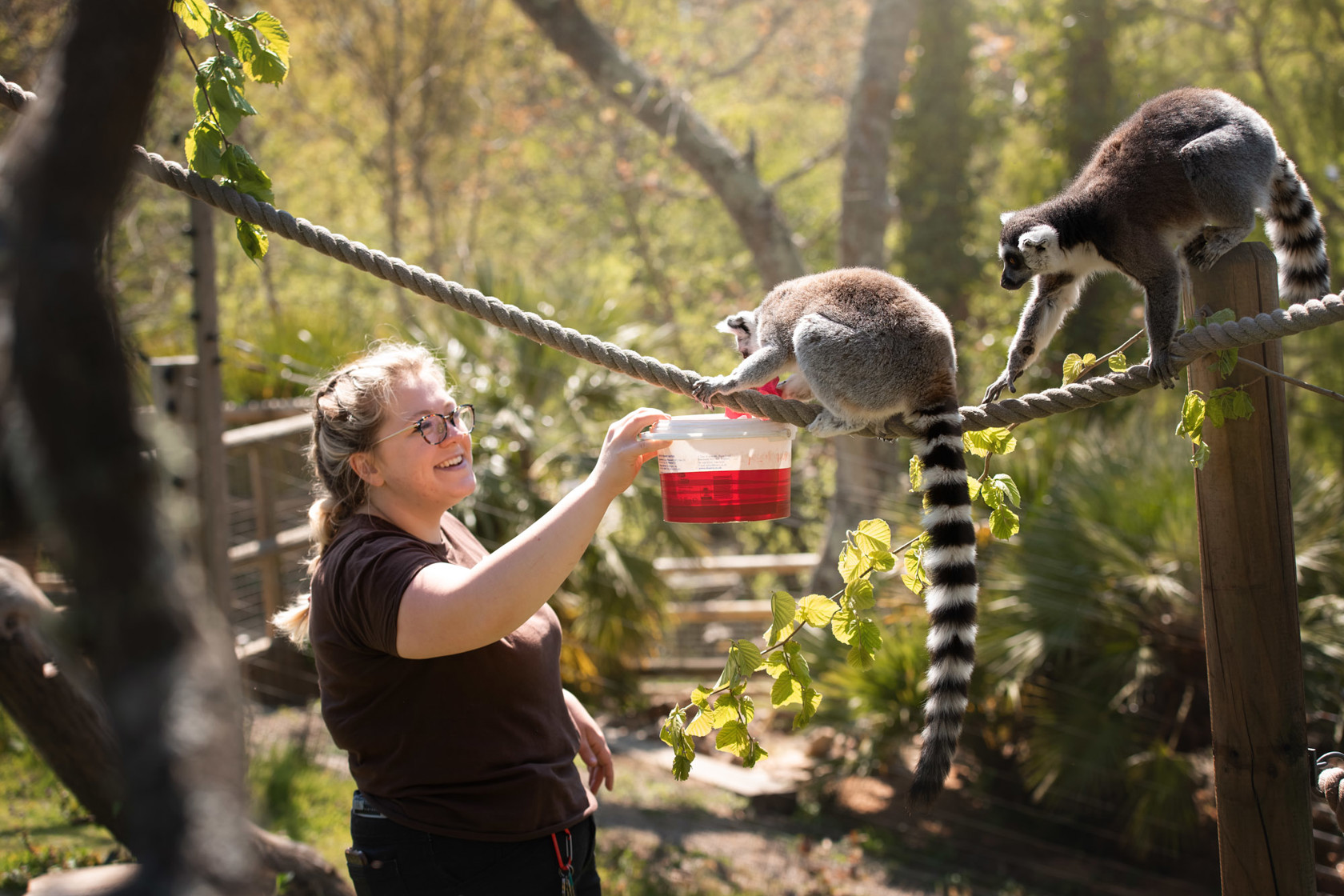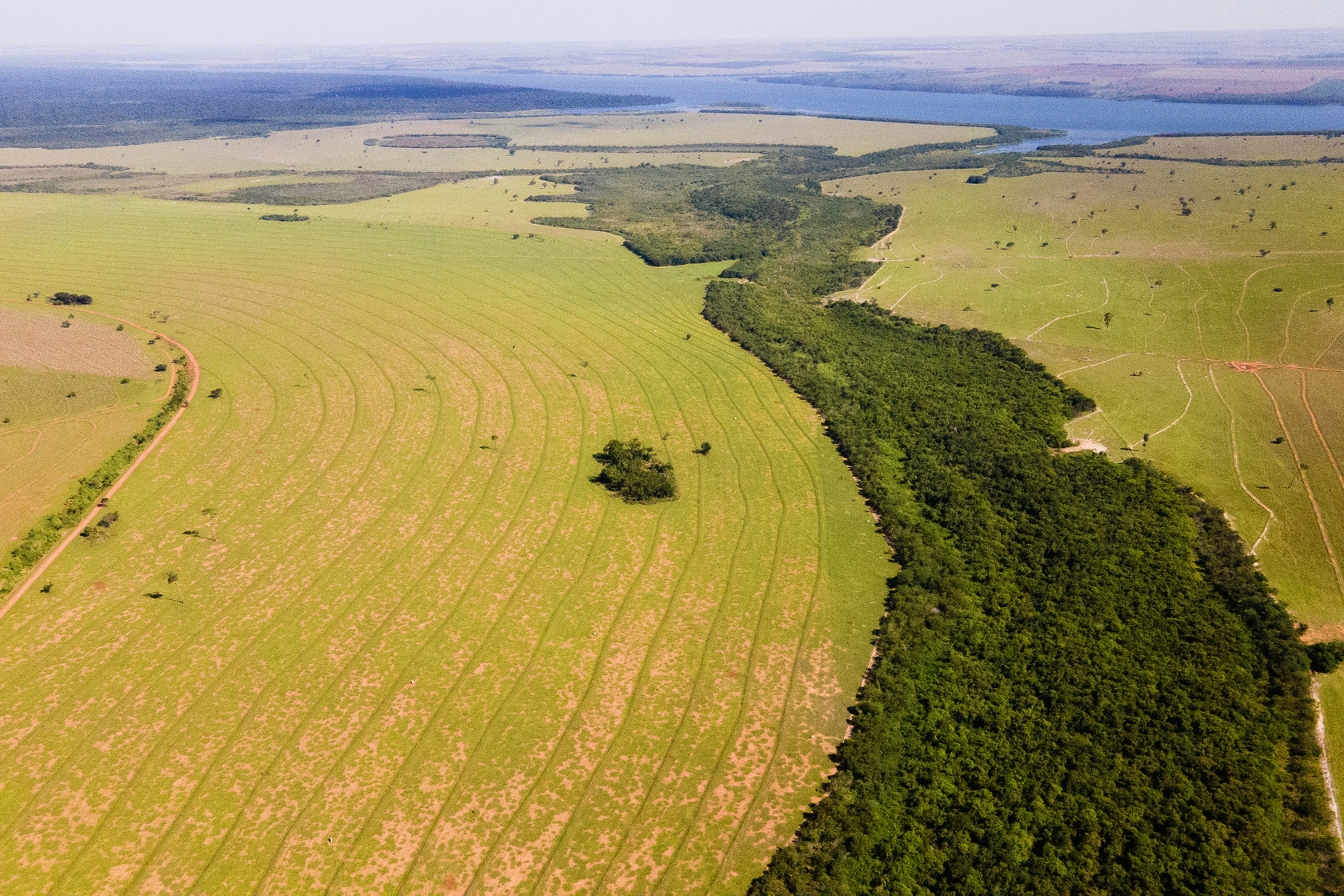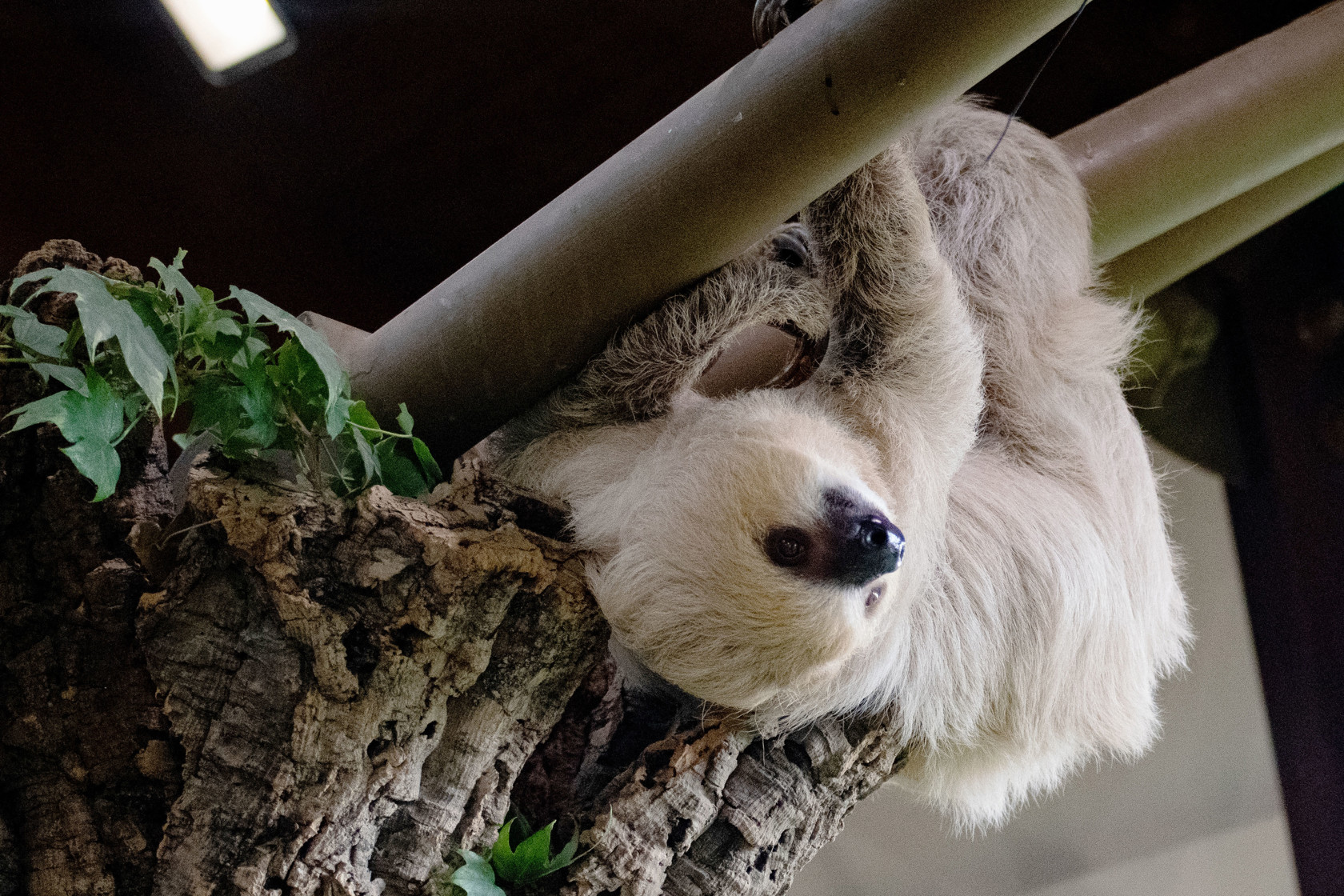Black lion tamarins moved to forest fragment to prevent local extinction
A group of wild black lion tamarins have been moved to a fragment of the Atlantic Forest in São Paulo, Brazil, to save an isolated tamarin population from dying out and prevent the loss of their unique genes.
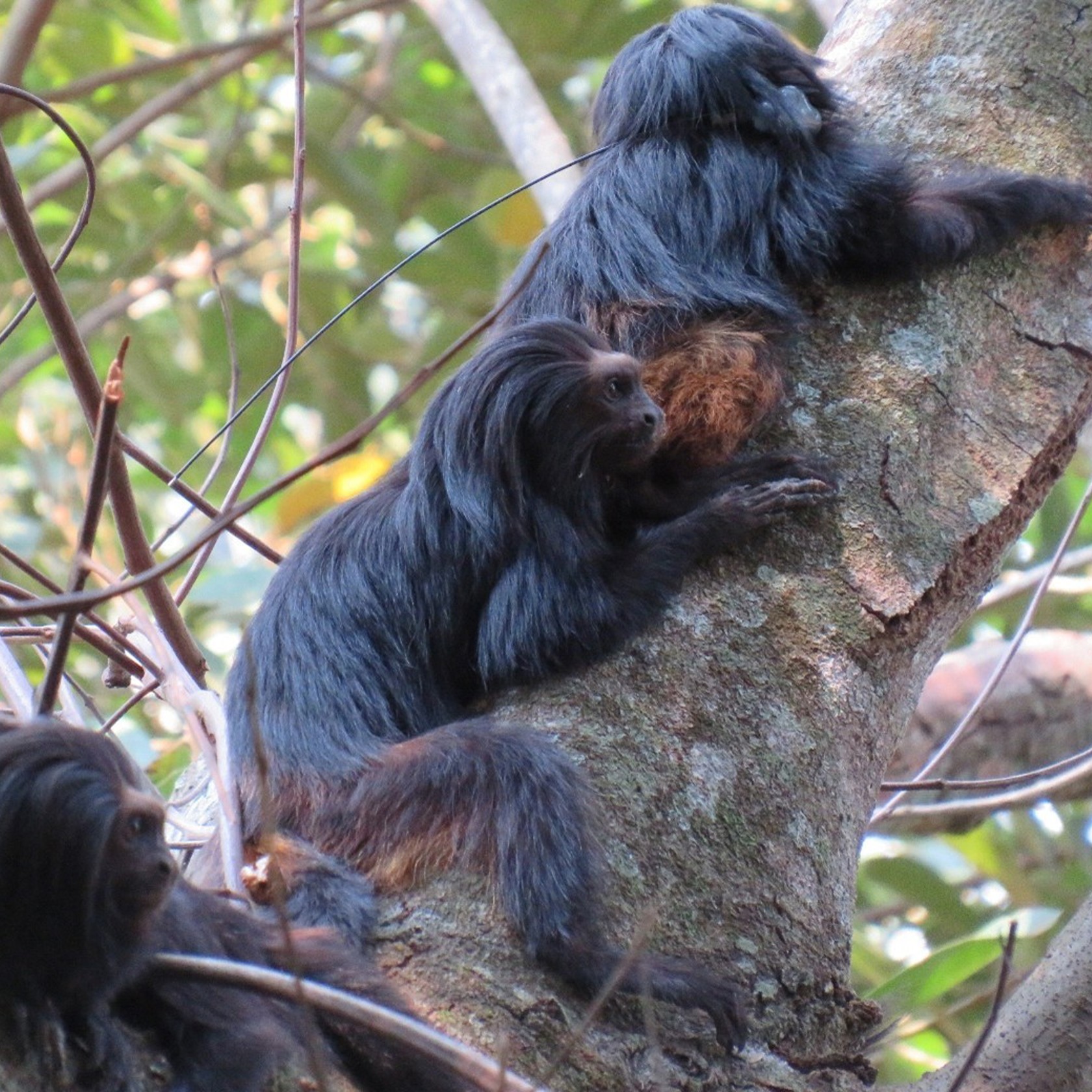
Durrell has been working with Instituto de Pesquisas Ecológicas (IPÊ) to restore the Atlantic Forest and protect black lion tamarins for over 30 years. The launch of Rewild Carbon, Durrell's impactful, nature-based climate solution, has enabled us to continue and scale up this work since 2021.
Found only in the Atlantic Forest, the black lion tamarin is an endangered monkey whose habitat is rapidly disappearing due to agricultural expansion, the establishment of rural settlements, and fires. The remaining forest is fragmented and surrounded by farms and plantations, which prevents populations of black lion tamarins from travelling to new fragments and reduces genetic diversity.
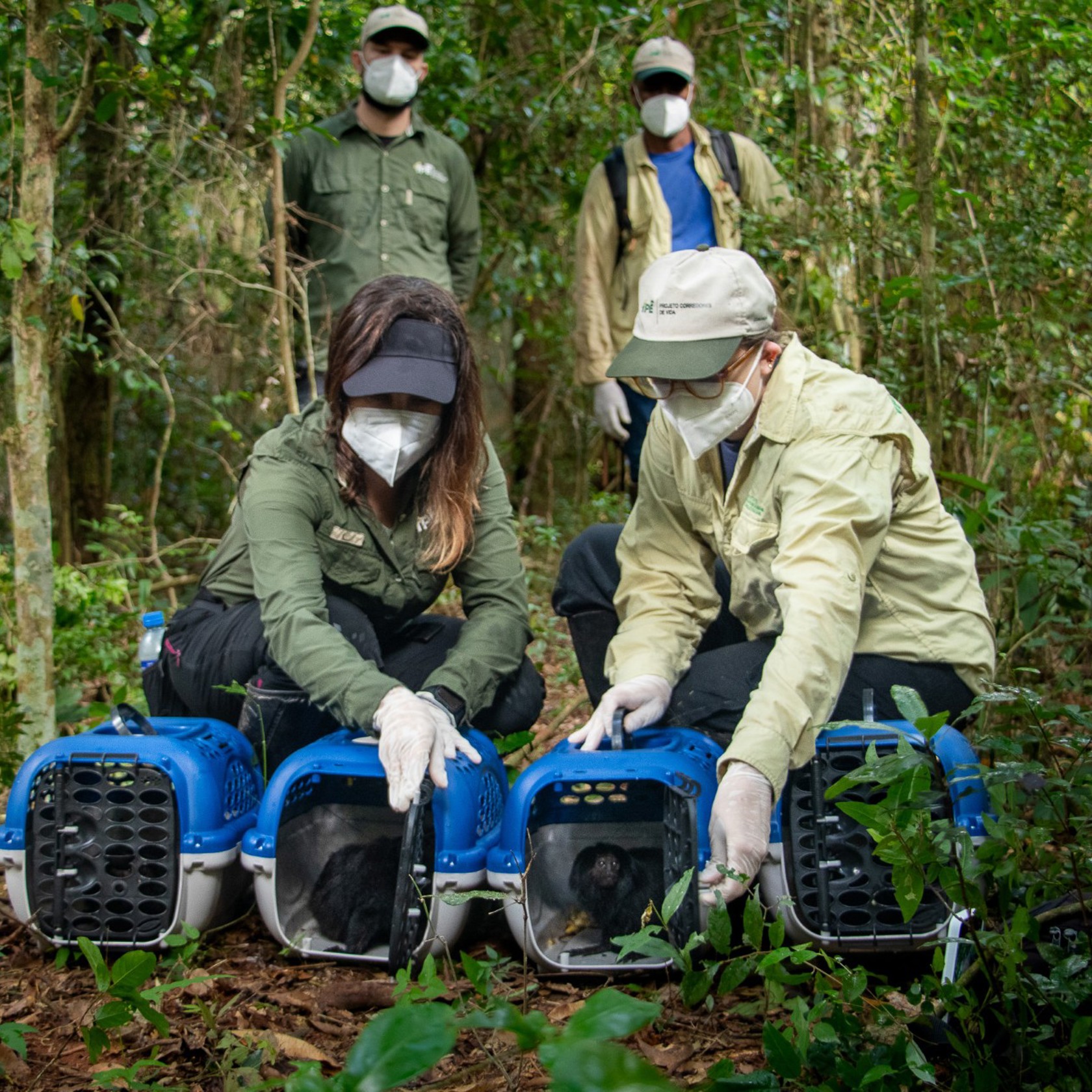
Diverse genetics are vital for the health and maintenance of a population and species. To improve genetic diversity, several tamarins have been moved from Morro do Diabo State Park - 34,000 hectares of protected Atlantic Forest, home to around 1,100 black lion tamarins - and released in a 515ha fragment of forest called San Maria.
Genetic studies carried out in 2003 with the isolated San Maria tamarins revealed that their genes aren't in any other known population of black lion tamarins. However, in 2022, researched showed that the population in this fragment had declined from five groups of tamarins down to two groups in a decade. Without conservation action, the population of black lion tamarins in San Maria would die out within an estimated 20 years, losing their unique genes forever.
The move was carried out by IPÊ and coordinated by Gabriela Rezende, leader of the Black Lion Tamarin Conservation Programme and a Durrell Academy graduate (Durrell Endangered Species Management course, 2013). Four tamarins were caught and transported, following health checks, from Morro do Diabo to San Maria. The process took about three hours from capture to release.
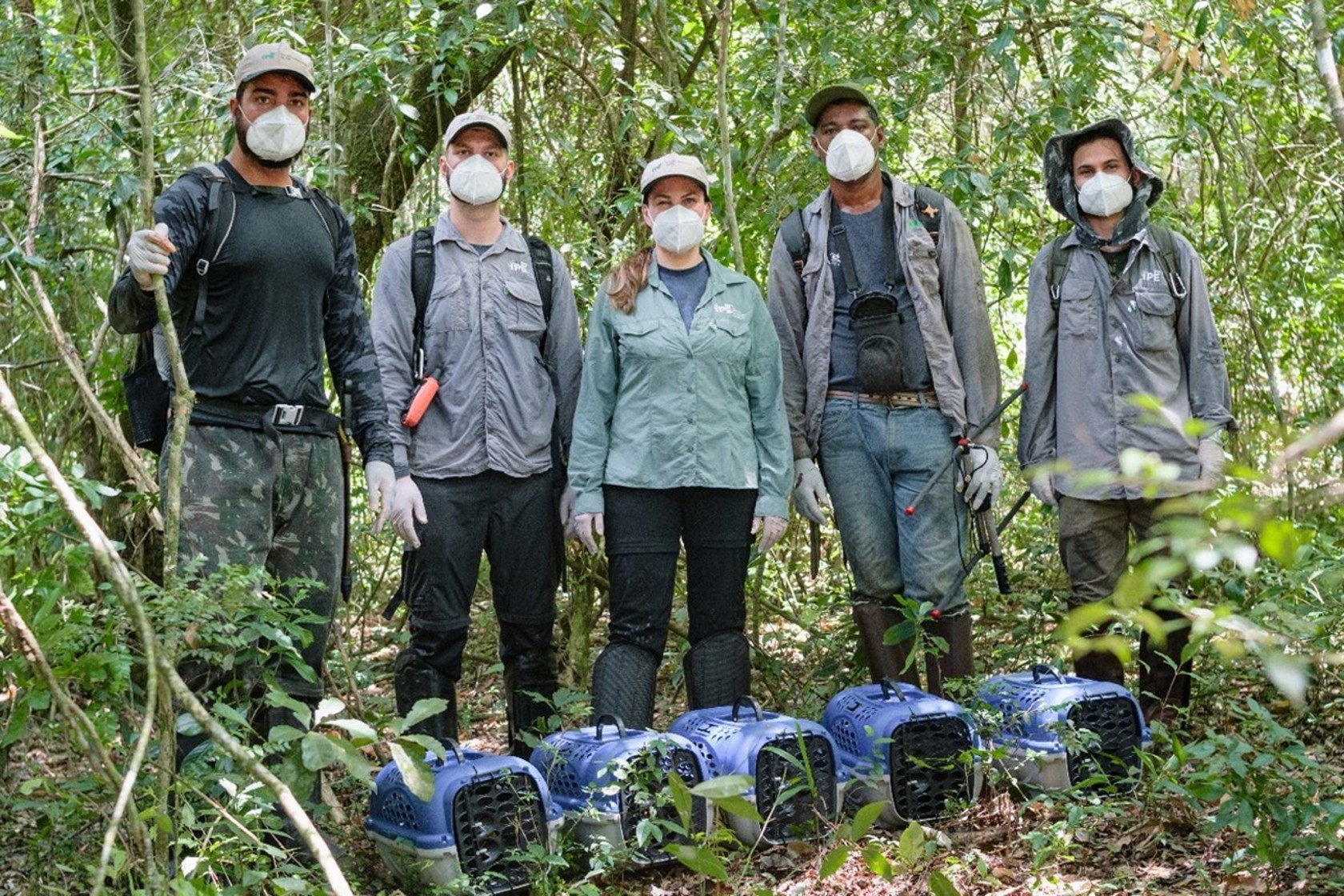
The Morro do Diabo group consisted of two adults and two juveniles, with the hope that the juveniles would form new groups with the San Maria tamarins, helping to increase genetic diversity. Unfortunately, around one week after release, one of the moved tamarins was found dead. With no obvious cause of death, autopsy results will hopefully provide some insight.
Tracking the three remaining tamarins by radio collar has shown them roaming the forest fragment as they establish themselves and seek to form a territory. IPÊ will also monitor them through audio recording, camera trapping, and health monitoring, with further plans for genetic analyses in five years to assess breeding and genetics.
While mixing these tamarin populations is vital, it is a short-term solution to protecting the species. Durrell and IPÊ are carrying out long-term work to connect San Maria to other forest fragments where different populations of tamarins live by planting tree corridors. Since 2021, Rewild Carbon has enabled the restoration of over 200 hectares of forest in the project area. The young forest corridors are already providing resources for many species. As the trees grow and mature, we're placing nest boxes in them to provide sleeping sites for the tamarins and encourage their dispersal throughout the forest. The trees will then mature into suitable tamarin habitats in the coming years, connecting forest fragments and helping to ensure long-term conservation of the species.
In the meantime, moving tamarins into isolated fragments will reinforce the existing population and guarantee they survive to occupy the new forests.

